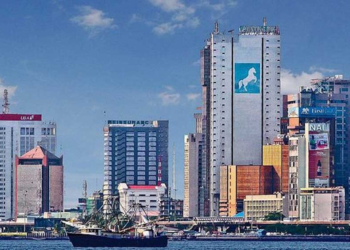Global foreign exchange (FX) reserves surged to $12.3 trillion by the end of 2023, marking a 3.5% increase from the previous year. Despite this overall growth, Nigeria’s share of these reserves has declined, highlighting economic challenges facing the nation.
According to the International Monetary Fund’s (IMF) latest data from the Currency Composition of Official Foreign Exchange Reserves (COFER), Nigeria’s FX reserves fell to $32.3 billion by the end of 2023. This represents just 0.26% of the global FX reserves, down from 0.36% in 2022. The decrease is attributed to reduced foreign exchange inflows and increased outflows.
Key Factors in Nigeria’s Decline
At the end of 2022, Nigeria’s FX reserves stood at $36 billion. However, by the close of 2023, the reserves had dropped to $32.3 billion. This decline is part of a broader trend, as Nigeria’s share of global FX reserves also fell quarter-on-quarter, from 0.28% in Q3 2023 when reserves were at $33.32 billion.
Global FX Reserve Trends
The U.S. dollar maintained its dominant position in global reserves, comprising $6.687 trillion or 54.22% of total reserves by Q4 2023. This is consistent with its share in Q4 2022 but reflects a longer-term decline from 59% in Q4 2020 and 71% in 1999. The euro held 18.55% of global reserves, a slight decrease from 18.9% in Q4 2022. The British pound and Japanese yen maintained stable shares at 4.5% and 5%, respectively.
The IMF noted a gradual increase in the use of non-traditional reserve currencies. The combined share of currencies like the Chinese Renminbi, Canadian Dollar, Australian Dollar, and Swiss Francs rose to 10.3% in Q4 2023, up from 9.9% in 2022 and 9% in 2020.
Composition of Nigeria’s FX Reserves
Nigeria’s FX reserves are composed of various assets, including the Chinese Renminbi and gold. As of Q3 2022, $3.2 billion of the reserves were in Chinese Yuan. By 2023, the reserves also included 21.37 metric tonnes of gold, valued at approximately $1.6 billion.
Reports indicate that a significant portion of Nigeria’s FX reserves is encumbered. Fitch Ratings has stated that about 30% of the reserves are tied up in currency swap deals with other central banks and foreign banks. Additionally, the Economist Intelligence Unit reported in August 2023 that 40% of the reserves were used as collateral for a $7.5 billion loan.
Global Shifts in FX Reserve Strategies
There has been a notable shift towards non-traditional reserve currencies, driven by diversification efforts and the rise of digital financial technologies. Central banks are gradually decreasing their holdings of U.S. dollars in favor of other assets that offer diversification and better returns.
According to a 2023 research paper by IMF analysts, financial sanctions have led central banks to slightly alter the mix of currencies in their reserves, reducing holdings of potentially sanctionable currencies and increasing gold reserves.
Bottom Line
Nigeria’s declining share of global FX reserves amidst rising global reserves highlights the country’s economic challenges, particularly in managing foreign exchange inflows and outflows. As the global financial landscape evolves, driven by diversification and technological advancements, Nigeria faces the ongoing task of stabilizing and effectively managing its FX reserves to ensure economic resilience.











